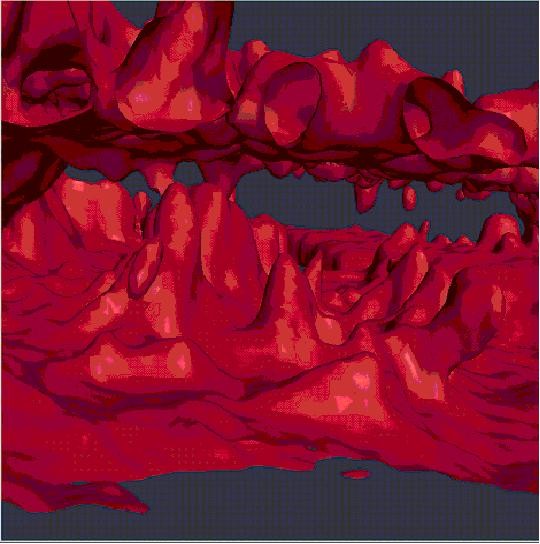Tag: cystic-fibrosis
The Ciliary Beat
Very high magnification view of cilia beating in real time. Video images were improved with noise reduction and contrast enhancemnent to make this motion visible. 400x magnification was used to relay the image to a newvicon tube camera, and differnetial interference contrast light microscopy to form the primary image. These were human airway epithelial cell cultures obtained from the UNC Cystic Fibrosis Center and grown in our laboratory. Each cilium is about 7 um long, and they can beat at up to 30 times per second, although those shown were much slower.
Cilia Hurricane
Very low magnification video of cultured ciliated airway cells grown in the CISMM cell culture facility. The cilia begin to beat in a coordinated manner that has the effect of moving the media, particles and mucous secreted by the cells in a circle around the culture well. These were first demonstrated by Hirotoshi Matsui and colleagues at the UNC Cystic Fibrosis Center. We use these “hurricanes” to find cultures with good ciliary function.
Big Bead Catch
A 2.8-micron diameter bead attached to slowly-beating cilia is tracked by the laser tracking and position feedback systems of the 3DFM. For the first two cycles, the bead is not tracked; it and the other two beads near the bottom of the image move as the cilia beat. As the tracking feedback kicks in, the background moves while the bead stays fixed in the center of the “+” sign. Note that the point on the bead that is tracked is slightly out of the focal plane of the optical microscope, so the three beads get slightly fuzzy while tracking is operating.
